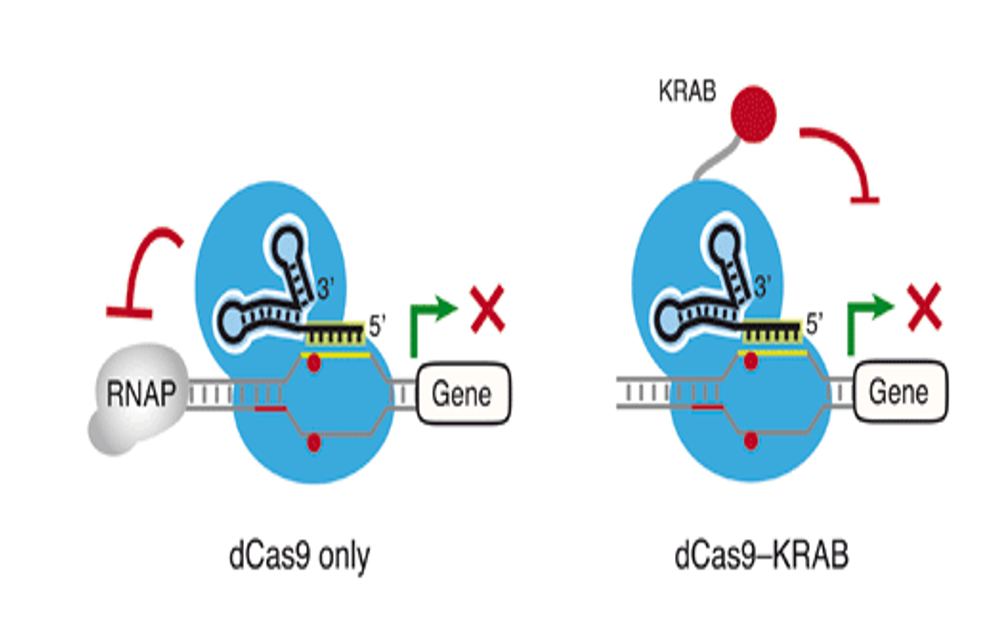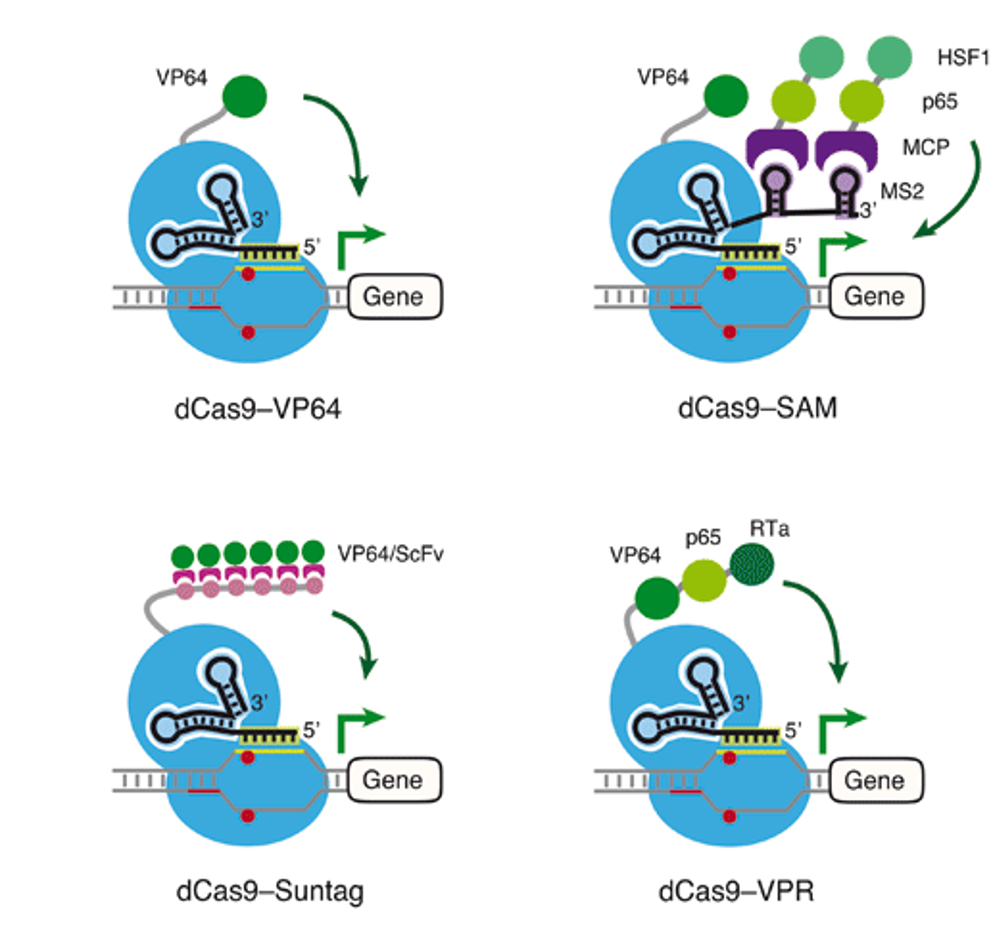
Our promise to you:
Guaranteed product quality, expert customer support.
 24x7 CUSTOMER SERVICE
24x7 CUSTOMER SERVICE
 CONTACT US TO ORDER
CONTACT US TO ORDER
CRISPR/Cas9-mediated Transcriptional Modulation 
With the rapid development of gene editing technology, the CRISPR/Cas system has greatly promoted the development of research in the field of biomedicine. Using CRISPR/Cas technology, scientists can edit specific genes in a shorter period of time, including deletions/inserts, specific knockout/knockin, and point mutations. The potential of CRISPR/Cas9 is far from this. In addition to using CRISPR/Cas9 to operate directly in DNA sequences to regulate gene expression at the DNA level, the researchers have modified the system to change/control the regulation of target genes transcription. Early experiments demonstrated that the deadly form of Cas9 (carrying D10A and H840A mutations) dCas9 targeting to the transcription initiation site is sufficient to inhibit transcription by blocking initiation. dCas9 can also be fused to transcriptional repressors or activators targeting to the promoter region, and these dCas9 fusion proteins can lead to strong transcriptional repression (CRISPR interference or CRISPRi) or activation (CRISPRa) of downstream target genes.
These systems fused Cas9 to a well-characterized transcriptional regulatory domain, using a pre-designed guide RNA to direct the complex upstream of the transcription initiation site. By using inactivated dCas9 protein, the complex can be targeted to a particular locus without cleavage or alteration of genomic DNA. After Cas9 binds to the target DNA sequence, the fused transcriptional regulatory domain can then recruit to inhibit or activate effectors to modify gene expression.
 Figure 1: Transcriptional Repression (CRISPRi) (Albert Lo, 2017)
Figure 1: Transcriptional Repression (CRISPRi) (Albert Lo, 2017)
The simplest dCas9-based activators and repressors are fused directly to a single transcriptional activator, such as the transcriptional activation domain VP64, consisting of four tandem copies of herpes simplex virus protein 16 (VP16) attached to the C-terminus of dCas9, which can be used to increase expression. Similarly, dCas9 can be fused with KRAB repressors to create a powerful platform for gene-specific transcriptional silencing (Figure 1). In addition, more sophisticated methods have been developed for more efficient activation of target genes in mammalian cells, including co-expression of epitope-tagged dCas9 and antibody-activator effector proteins (eg, Sun Tag system), dCas9 fused to several different activation domains in series (eg dCas9-VPR), and co-expression of dCas9-VP64 with a modified scaffold gRNA and additional RNA-binding helper activators (eg, SAM activators) (Figure 2). The SAM system is capable of potent transcriptional activation of the endogenous gene targeted by the binding RNA within 200 bp upstream of the transcription initiation site.
 Figure 2: Transcriptional Activation (CRISPRa) (Albert Lo, 2017)
Figure 2: Transcriptional Activation (CRISPRa) (Albert Lo, 2017)
As one the leading gene editing companies, CRISPR PlatformCB is committed to providing professional solutions, services, and products for researchers work with CRISPR/Cas technology, which has been well received by customers. To support your researches, we offer custom CRISPR-mediated gene transcriptional regulation solutions, including dCas9 fusion strategy design, and synthesis of gRNAs designed for CRISPRa/CRISPRi applications, for any human, mouse or rat gene, to help you solve the problems of CRISRP system application. We can also provide CRISPRa construction for other mammalian species genes according to your needs. If you have any projects that require CRISPR/Cas9 technology, don’t hesitate to contact us.
Reference
- Albert Lo, Lei Qi. Genetic and epigenetic control of gene expression by CRISPR–Cas systems. F1000Research. 2017